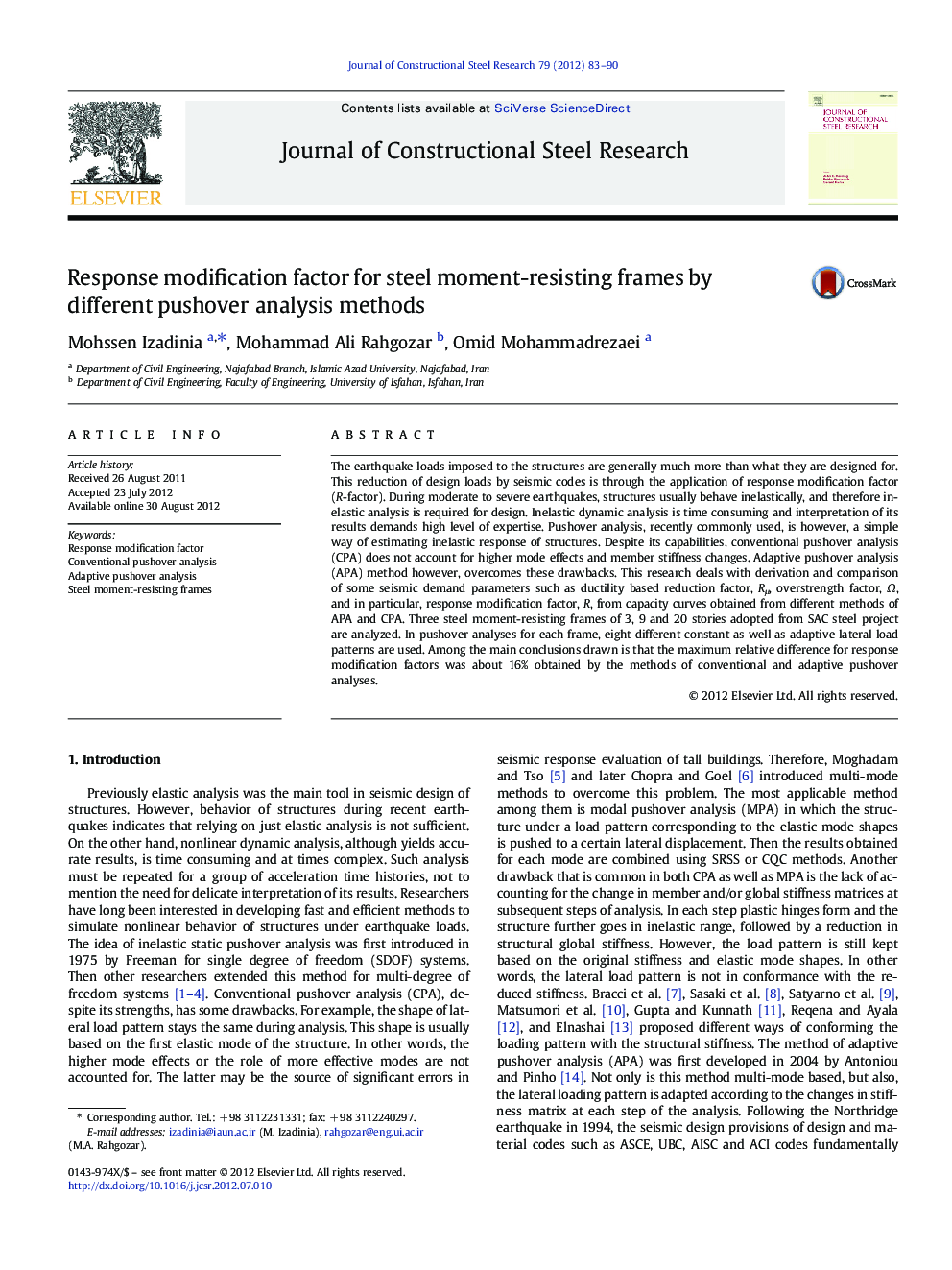| Article ID | Journal | Published Year | Pages | File Type |
|---|---|---|---|---|
| 285067 | Journal of Constructional Steel Research | 2012 | 8 Pages |
The earthquake loads imposed to the structures are generally much more than what they are designed for. This reduction of design loads by seismic codes is through the application of response modification factor (R-factor). During moderate to severe earthquakes, structures usually behave inelastically, and therefore inelastic analysis is required for design. Inelastic dynamic analysis is time consuming and interpretation of its results demands high level of expertise. Pushover analysis, recently commonly used, is however, a simple way of estimating inelastic response of structures. Despite its capabilities, conventional pushover analysis (CPA) does not account for higher mode effects and member stiffness changes. Adaptive pushover analysis (APA) method however, overcomes these drawbacks. This research deals with derivation and comparison of some seismic demand parameters such as ductility based reduction factor, Rμ, overstrength factor, Ω, and in particular, response modification factor, R, from capacity curves obtained from different methods of APA and CPA. Three steel moment-resisting frames of 3, 9 and 20 stories adopted from SAC steel project are analyzed. In pushover analyses for each frame, eight different constant as well as adaptive lateral load patterns are used. Among the main conclusions drawn is that the maximum relative difference for response modification factors was about 16% obtained by the methods of conventional and adaptive pushover analyses.
► Response modification factors was calculated according to pushover analyses. ► Pushover analysis methods include constant and adaptive load patterns. ► Maximum relative difference for response modification factors was 16 percent. ► Displacement based adaptive pushover show higher ductility comparing methods.
